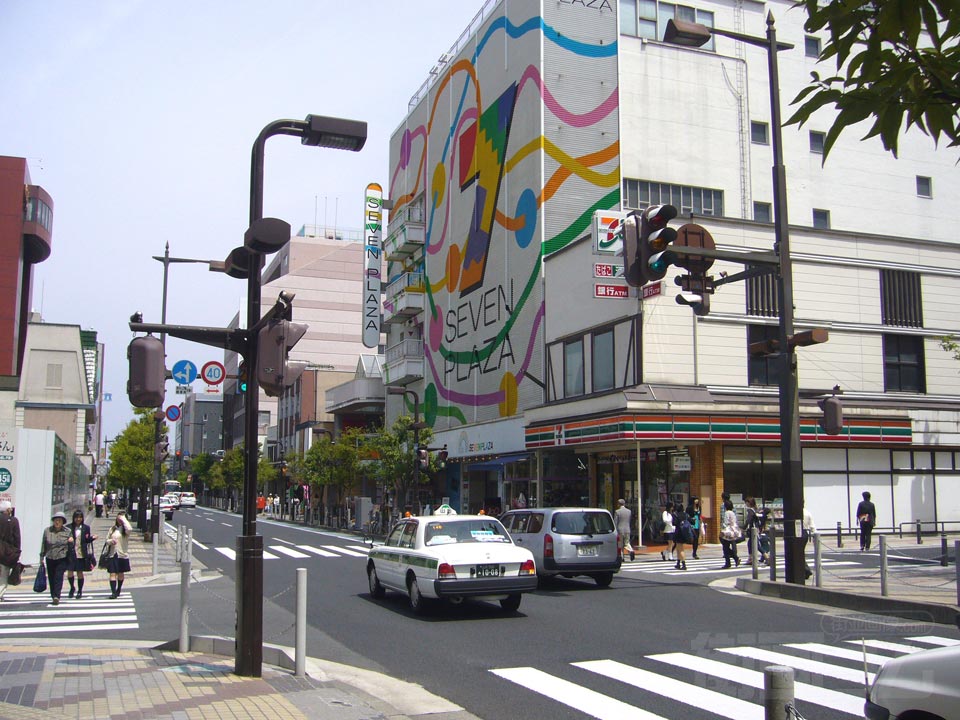 Although you may hear otherwise throughout your stay here, this is not rural Japan. Yamagata is a medium-sized city with lots to see and do. It is close to the mountains and many rich farmlands, but still has all the amenities of the modern world. And it is only 2 and 1/2 hours by bullet train from Tokyo. Soon you too will come to know the perfect blend of convenience and tranquility that Yamagata City has to offer. Until then, take take a look at the photos below to get acquainted with the some of the major places and landmarks that make Yamagata a great place to live and work.
Although you may hear otherwise throughout your stay here, this is not rural Japan. Yamagata is a medium-sized city with lots to see and do. It is close to the mountains and many rich farmlands, but still has all the amenities of the modern world. And it is only 2 and 1/2 hours by bullet train from Tokyo. Soon you too will come to know the perfect blend of convenience and tranquility that Yamagata City has to offer. Until then, take take a look at the photos below to get acquainted with the some of the major places and landmarks that make Yamagata a great place to live and work.Yamagata City Hall and Board of Education (BOE)
 Aside from the train station, the City Hall and BOE will probably be the first place you go as soon as you arrive in Yamagata. We have monthly meetings at the BOE where all the Yamagata City JETs come together to discuss upcoming events and matters pertaining to work, teaching, and your daily life in Yamagata. There are many other teachers working at the city hall who you may have a chance to meet. But the two people you'll have the most contact with are Inaba-sensei, who directs the ALTs in Yamagata City and Mrs. Rumi Hoshikawa, who helps us with all our daily life and business stuff in Japan. From banking to housing to your schools and just about everything else, these two people are working hard to make sure you have the best experience here possible. The BOE is located on the 8th floor of this building.
Aside from the train station, the City Hall and BOE will probably be the first place you go as soon as you arrive in Yamagata. We have monthly meetings at the BOE where all the Yamagata City JETs come together to discuss upcoming events and matters pertaining to work, teaching, and your daily life in Yamagata. There are many other teachers working at the city hall who you may have a chance to meet. But the two people you'll have the most contact with are Inaba-sensei, who directs the ALTs in Yamagata City and Mrs. Rumi Hoshikawa, who helps us with all our daily life and business stuff in Japan. From banking to housing to your schools and just about everything else, these two people are working hard to make sure you have the best experience here possible. The BOE is located on the 8th floor of this building.Nanokamachi
Nanokamachi is the main shopping district running through the heart of Yamagata City. Here you can find the city hall as well as lots of restaurants, izakayas, cafes and bars, as well as various places to buy books, clothes, supplies and many other things. Be sure to check out Onuma Department Store, AZ, Seven Plaza, and Hachimonjia.
Click here for a full photo tour of Nanokamachi: (Japanese only, but nice pictures)
Right-click to download this quick guide to Nanokamachi shopping district:
Ekimae is another major landmark in Yamagata. From here, one can catch trains to the surrounding cities of Yamagata and to other major destinations, or catch city buses or buses traveling to Zao and other places. Inside the station there is a mall that sells clothes, books, movies, coffee and food. Connected to the station is Kajou Central. Being the tallest building in Yamagata, it can serve as a sort of north star if you ever get lost. You can go here for movies and various cultural events, and in the international center there is a pretty good English library. Around ekimae there are tons of restaurants, izakayas and cafes to check out with your friends.
Kajo Park
Kajo is a huge park in Yamagata City, which is great for playing sports with friends and for cherry blossom viewing in the spring. Your schools will hold sports festivals here, so you will have a chance to watch baseball, softball, table tennis, judo, and many other sports tournaments here throughout the year. There are some small museums located in the park where you can learn a little about the history of Yamagata. There is a fantastic walking path which circles the park. This feature as well as the open grounds makes Kajo a great place for exercise. You can buy food from nearby shops and enjoy eating lunch under the shade of a tree. Or go skating in Kajo's small skate park.
Mt. Zao











